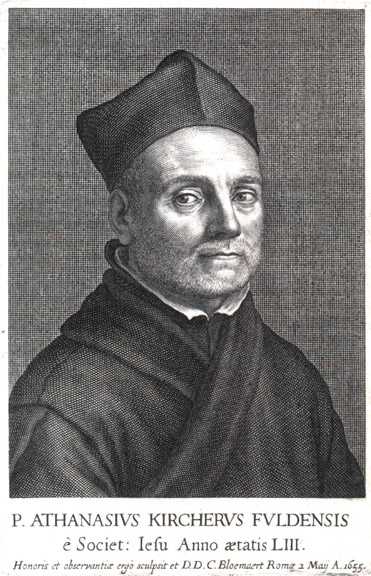
Portrait of Athanasius Kircher
|
KIRCHER, Athanasius
(1602 - 1680)
Athanasius Kircher was the most celebrated scholar and polymath of the mid-seventeenth century. The scope of his knowledge and intelligence was so vast and deep that he has been compared to da Vinci and can arguably be considered to have been the last true renaissance man. His approach to scholarship was to pick a subject - e.g., geology - immerse himself in it until he had mastered all past and present thinking and knowledge on the subject, then write a massive treatise such as Mundus subterraneus. Each book was lavishly illustrated and produced, sparing no expense for typography, paper, and binding. Unfortunately, Kircher's extraordinary learning was shaped by Jesuit theological doctrine and suffered from a lack of critical scientific instinct. Thus his books are a remarkable mixture of historical fact and folly, contemporary science and pseudo-science, brilliant technological forsight and prescience combined with preposterous speculations, and a very large dose of credulous nonsense. As an example, the Mundus Subterraneus contains the first maps of ocean currents, but his philosophical need to reconcile scientific studies with biblical history led him also to imagine the existence of two places on the earth's surface where the biblical floodwaters of Noah's time could have flowed back into the earth's interior. Kircher was the last of the old school of scholar intellectuals, in the tradition of Pliny and Bacon, rather than an early modern scientist. He has consequently faded from memory and is now studied and appreciated only by those that admire how a single person can command and alter the entire landscape of knowledge. Links Mundus Subterraneous, Amsterdam 1665 Musurgia Universalis, Rome 1650 Phonurgia Nova, Kaempten 1673 |

Portrait of Athanasius Kircher |